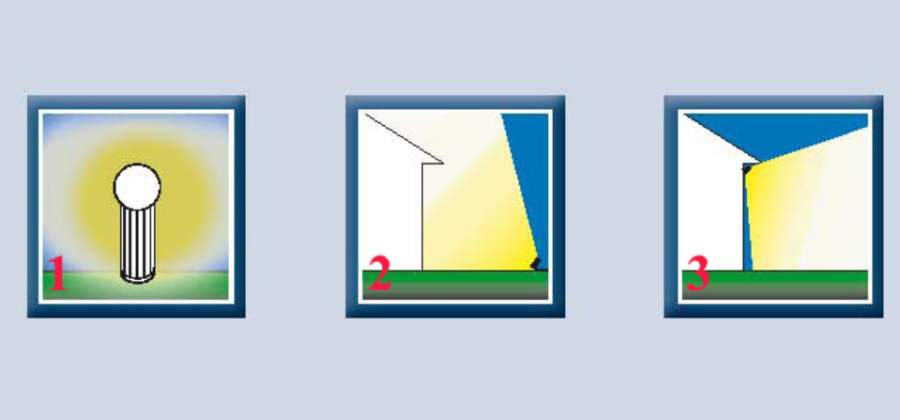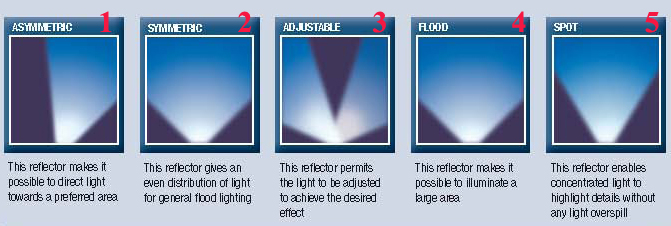The light from a luminaire is controlled by its reflector and the position of the lamp in relation to the reflector.
Aurora Lighting offers a general explanation of the types of reflectors one can use outdoors and the shapes of light output possible.
Reflector Types - Outdoor Lights
- Asymmetric - this reflector makes is possible to direct light towards a preferred area.
- Symmetric - This reflector gives an even distribution of light for general flood lighting
- Adjustable - This reflector permits the light to be adjusted to achieve the desired effect
- Flood - This reflector makes it possible to illuminate a large area
- Spot - This reflector enables concentrated light to highlight details without any light overspill
Light Pollution Outdoors
If the external lighting is badly selected and installed it can result in light being directed into the sky.This wastes energy and also ‘pollutes’ the view of the sky. Also, if the lighting is misdirected, it can also cause discomfort and visual impairment - possibly resulting in accidents.
The arrangement of the light fittings and their combination outdoors needs to be optimal for the sake of a proper exterior lighting and no lighting pollution.
Below are some popular ways of having light pollution outdoors, with a picture and a short explanation.

- This luminaire gives upwards light loss
- The side of the building is lit and some of the light is lost upwards
- The light is aimed downwards but the angle of the luminaire is causing upward light loss
- Correct illumination achieved with reflecting louvres
- Wherever possible the light should be directed downwards to minimise light pollution
- The use of asymmetrical reflectors avoids excessive angling of the luminaire





